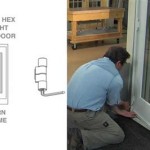How Deep Should Concrete Patio Be?
When constructing a concrete patio, determining the appropriate depth is crucial for its durability, stability, and aesthetics. The depth of a concrete patio varies depending on factors such as the type of soil, frost penetration, local building codes, and intended use.
Frost Penetration Depth: In areas with cold climates, the concrete patio should be poured below the frost penetration depth to prevent damage caused by freezing and thawing cycles. Frost penetration depth varies regionally and can be obtained from local building codes or geotechnical engineers.
Soil Conditions: The type of soil also influences the concrete patio depth. Well-draining soils, such as sandy or gravelly soils, require less depth compared to poorly draining soils, such as clay soils. Clay soils expand when wet, which can cause concrete to crack if it is not thick enough.
Concrete Patio Use: The intended use of the concrete patio also affects its depth. For patios intended for light foot traffic, such as seating areas or walkways, a depth of 4-6 inches may be sufficient. However, patios that will support heavy loads, such as vehicles or large gatherings, require a greater depth of 6-8 inches or more.
Building Codes: Local building codes often specify minimum depths for concrete patios. These regulations ensure the safety and longevity of the structure. It is essential to consult local building officials to determine the required depth in your area.
Base Material: The concrete patio should be poured on a stable base material, such as compacted gravel or crushed stone. The base material should be at least 4-6 inches thick and well-compacted to prevent settling and cracking.
Installation Process: To ensure proper installation, the concrete patio should be poured by experienced contractors. The concrete should be mixed and placed according to industry standards. It should be adequately cured by keeping it moist for several days to achieve maximum strength.
Additional Tips: Consider adding reinforcement, such as rebar or fiber mesh, to the concrete to improve its strength and prevent cracking. Sloping the concrete surface slightly away from buildings or other structures will help prevent water from pooling and damaging the patio or buildings.

Quikrete Building A Concrete Patio
Mixing Concrete For A 15 Foot Square Slab Jlc Online
:strip_icc()/SCM_076_04-80013d140c2d4a8e9033d9ae1fd0ff54.jpg?strip=all)
How To Excavate For A Patio Walk Or Wall Footing

Pouring Concrete Patio What Could Go Wrong With Doing It Yourself

Diy Concrete Patio In 8 Easy Steps How To Pour A Cement Slab

Quikrete Building A Concrete Patio

How To Pour A Concrete Slab Diy Family Handyman

Concrete Porch Slab On Grade Detailing Structural Engineering General Discussion Eng Tips

How To Prep Form Pour A Concrete Slab For Beginners Start Finish

How Thick Should A Concrete Patio Be








